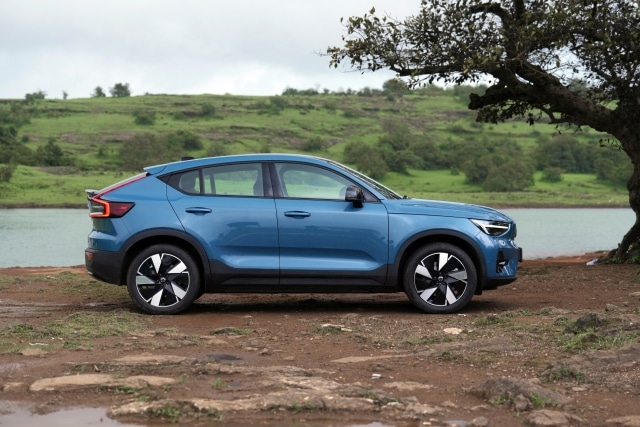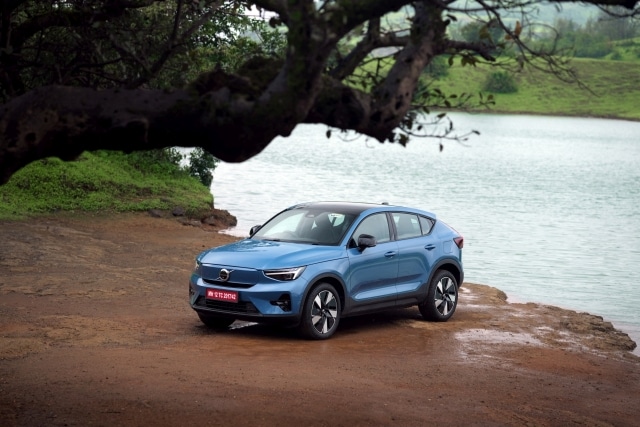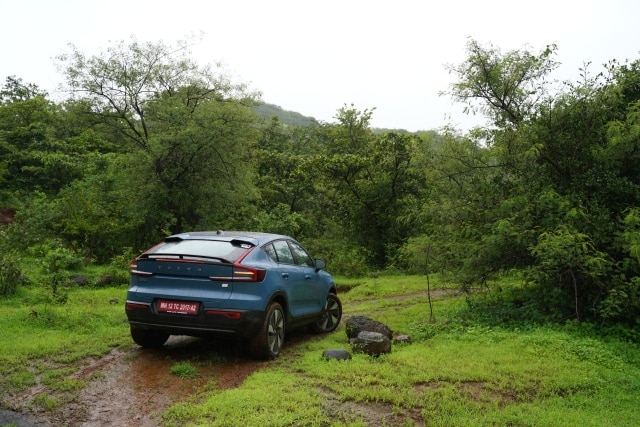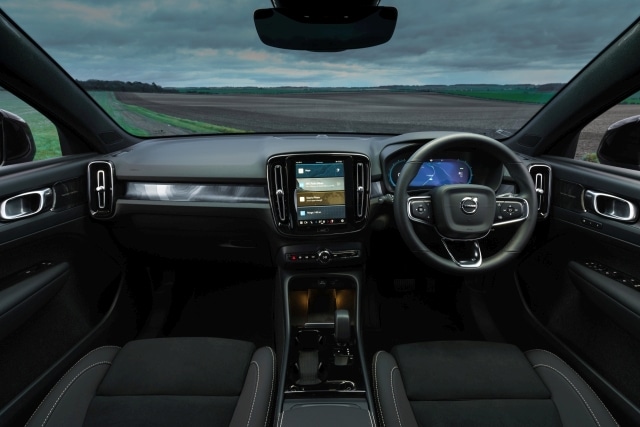The stunning Volvo C40 Recharge is now in India. This is their first coupé SUV model, albeit a compact one, and it extends their advantage in the luxury electric vehicle segment. We drive it around the hills outside Pune.

Story: Jim Gorde
Photography: Apurva Ambep and Volvo Car India
Ninety-six years have gone by since Volvo began doing what they do best—making safe cars for every-day use in the most challenging of scenarios. Volvo have been everywhere: the sky, the water, and all around the globe. While they have been known for making boxy estates, including estates like the 850 that went racing, their design language took a curvaceous turn towards the breathtakingly stunning and modern circa 2014. The new XC90 SUV led the charge and the XC60 followed, with the smaller XC40 joining the ranks soon thereafter. Their first all-electric car, the XC40 Recharge, marked the keynote that sounded the next wave of their success. Now there’s another all-new model, the C40 Recharge.

So, what of the new C model? The Volvo C40 is new, yes, but the “C” model-line goes back over 25 years to the C70 coupé and convertible models. The handsome coupé didn’t make it to a new generation but the convertible saw a new model, new engines, and a longer life, including a powerful five-cylinder turbo-petrol and even a turbo-diesel with that familiar “D5” badge.
The C30 hatchback was the other model. You’d know it if you happened to watch the Twilight movie franchise. It’s the car Edward Cullen (or Cedric Diggory, as I know him) drives on screen. It was also the base for the Polestar-worked PCP with a 405-hp, 2.5-litre, five-cylinder turbo-petrol engine. But on to the new 40. This one has 408 hp but doesn’t have five cylinders or any cylinders… well, apart from the ones for the brakes.
The C40 Recharge marks a series of firsts for Volvo. It’s a new badge. It’s the first C model with four doors. It’s the company’s first coupé-style SUV and, of course, it’s the first C model in India; the C70 and C30 were never sold here.

At first glance, it looks stunning. And that commands a second, much longer look at it. It gets a styling similar to that of the XC40 Recharge at the front, but there are differences. The grille is co-ordinated with the body colour, the headlights are new Pixel LED units and make use of several individual diodes that make for a better active light spread and the use of anti-dazzle beams. Around the side is where the design difference is most pronounced. Although 4,440 millimetres long and running the same 2,702-mm wheelbase as the XC40, the Volvo C40 has a roof-line that sharply tapers off in dramatic style and lowers into the substantial shoulder-line ending in a pair of neat new tail-light clusters which now flow into the tail-gate to continue the line of what has become one of the most iconic tail-lamp designs in the world.

Inside, there is no dearth of space, comfort, equipment or luxury. Everything looks simple, well-finished, and, well, very Volvo. Function takes top priority and there are no elements that divert attention from the essence of their need to be there. Everything just fits. The large glass roof is a new touch and the glass is laminated and insulated for maximum heat and UV protection. The materials used for the carpets, door-panels trim, and such are made from recycled or upcycled sustainable materials including reclaimed wood, plastic bottles, and cork, among others. One particular element that augments the presence of the unique material used, and indeed the car’s origins, is the glowing dashboard section on the passenger side. It resembles the topography of the Swedish mountains and is a truly unique rendition on its roots. The 12.3-inch centre touchscreen isn’t as obvious as before, now joined by a neat stack of climate controls and another high-resolution info-display behind the steering wheel for the driver. The fact that it is an ergonomically gifted car makes it very easy to find a comfortable driving position and just get going. The smart key fob is all that is needed and, like the XC40, no start button is required. Just move the by-wire shift-lever to “D” and it’s ready to go.





















Leave a Reply